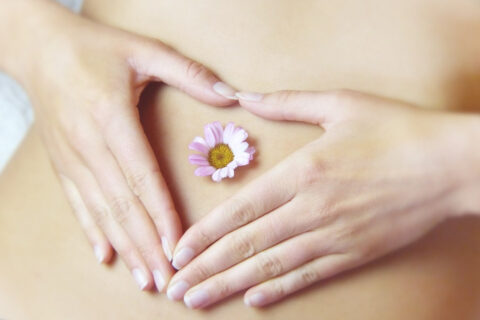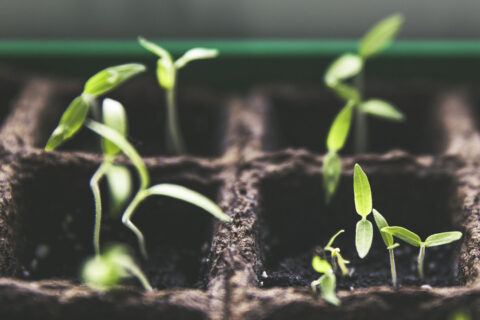Synthetic colours are suspected of causing allergy-like reactions. A good reason to embellish the eggs from the farm with colours from nature. Whether with a pattern, in one colour or printed: with our tips, every Easter nest will be an eye-catcher.
Colourful plants
Coloured eggs always require a broth in which the eggs are placed and thus take on the colour. If they are cooked directly in the broth (approx. 10 min), the colour is more intense. The plant parts can either be removed (results in plain coloured eggs) or left in the water, which can produce interesting patterns. And all this with natural colours!
There are no limits to your imagination. As diverse as our native plants are, so are the possible colour combinations. If you want to give the eggs a nice shine, rub them with cooking oil after dyeing while they are still warm.

–Red: Onion skins provide a delicate red. For a rich red, use fresh beetroot or its juice. The peeled beetroots are cooked for 40min before you put in the eggs, which turn red to purple. The colour becomes more intense the longer they stay in the broth. If you prefer russet eggs, madder roots are a good choice. Madder roots are available in drugstores and you need about 50g. First, pour two litres of water over them and soak them overnight. After straining, place the eggs in the madder liquid and fill the container with the hot boiling water. Depending on how long the eggs cool in the dye bath, the redder they become.
–Lilac: After boiling, the eggs are placed in blueberry juice, which colours quickly. After half an hour, the purple tones are already dark. Then carefully pat the eggs dry with household paper.
–Yellow: Turmeric is the magic word. The golden-yellow spice is used in Ayurvedic medicine for gastrointestinal problems and is also perfect for colouring Easter eggs. For the Easter eggs, boil about 10 g of turmeric powder (1 tsp) in half a litre of water for ten minutes. If you boil the eggs at the same time, you will get dark yellow eggs. They become light yellow if you boil the eggs separately and only then add them to the broth.
You can get orange-yellow eggs with carrots, which you cut into small pieces and boil for 30-40 minutes. Cut up about 250 g of carrots, add to a litre of water and boil for 30-40 minutes.
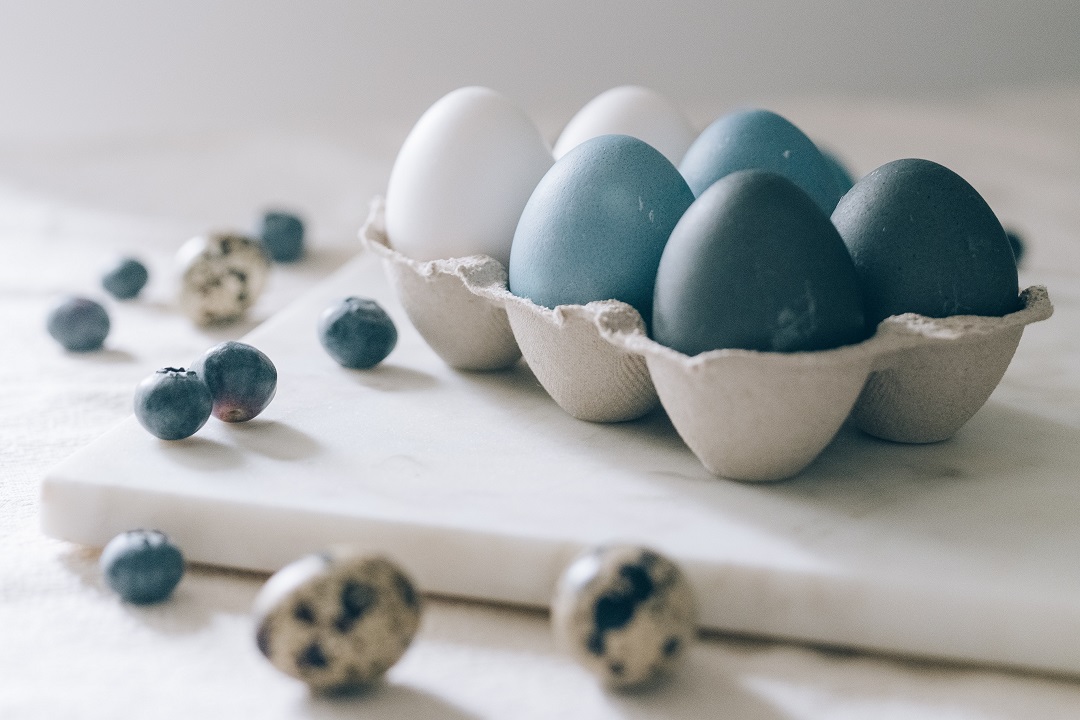
–Blue: Of the berries, elderberries and blueberries are particularly suitable. However, the blue cabbage (red cabbage) is the front runner. A good side effect is that you can serve the cabbage as a vegetable afterwards. For blue Easter eggs, cut 1.5 kg of red cabbage and boil the small pieces with 1.5 litres of water in a large pan for 25 minutes. Add 1 tablespoon of white wine vinegar. Then boil the eggs and put them into the warm cabbage broth while they are still hot. The eggs begin to take on colour after an hour. If you want them very dark, put them in the broth in the refrigerator overnight.
–Grey: Stone-coloured eggs are obtained by adding 1 dl of blueberry juice to the red cabbage broth described above. If you then draw white lines on them with white paint (e.g. chalk), the eggs look like real stones from the riverbank.
–Green: Spinach, parsley and nettles are popular. About 300 g of spinach is boiled covered with water for about 40 min to make a green broth. Alternatively, blue eggs dyed with red cabbage can be recoloured in a turmeric decoction. To do this, boil 1 tsp of turmeric in half a litre of water and pour into a container. Because turmeric colours quickly, the blue eggs should only be put in for a short time.
–Brown: Add coffee grounds or fresh coffee powder to hot water to make brown eggs. They become dark brown if you add onion peelings to the broth.
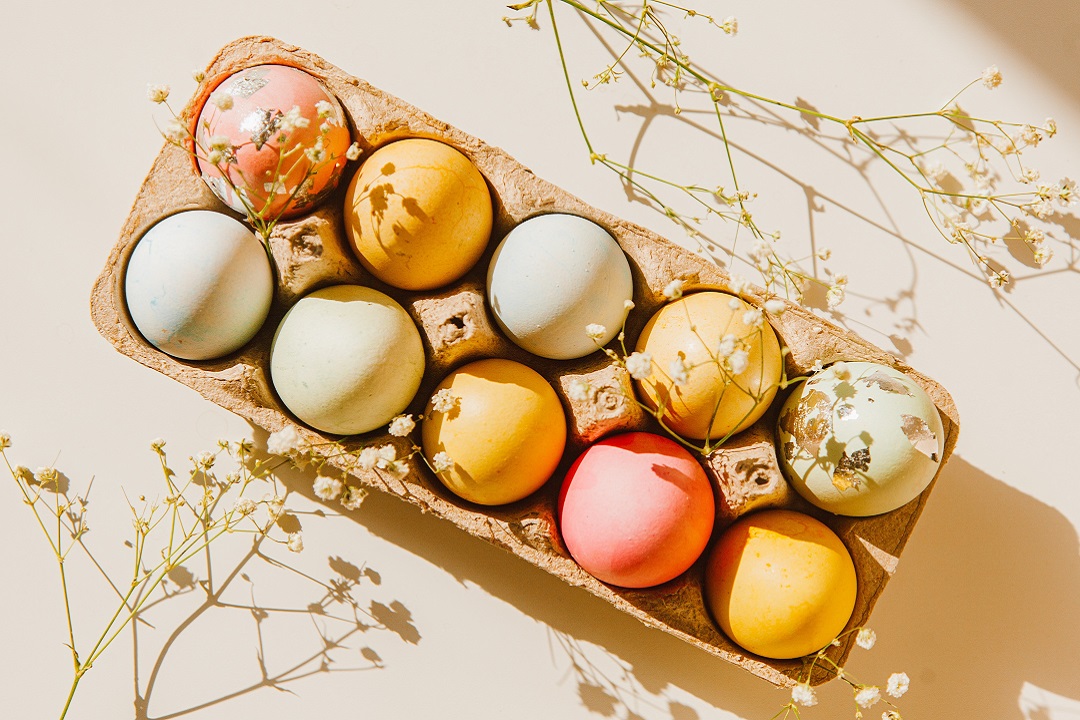
Easter eggs with pattern
You can create unique patterns and shapes on Easter eggs with simple household products. To do this, attach the items to the eggs before dipping them into the broth and only remove them when the paint has dried. To make the paint stick better, some people wipe the eggs with vinegar beforehand, which roughens the eggshell.
For example, rubber bands (rubber rings) wrapped around the eggs make beautiful ring shapes.
Plants also make very nice prints. For example, moisten the front of a clover leaf and press the moist side onto the egg so that it sticks well. Now button up a pair of nylon tights that are no longer needed on one side (e.g. the tip of the foot) and pull them over the egg on the open side. The plant should not slip. The stocking is now stretched, smoothed and also buttoned on the second side. After dipping it into the brew, the area with the leaf is blow-dried cold and the leaf is pulled off. The organic pattern is finished.
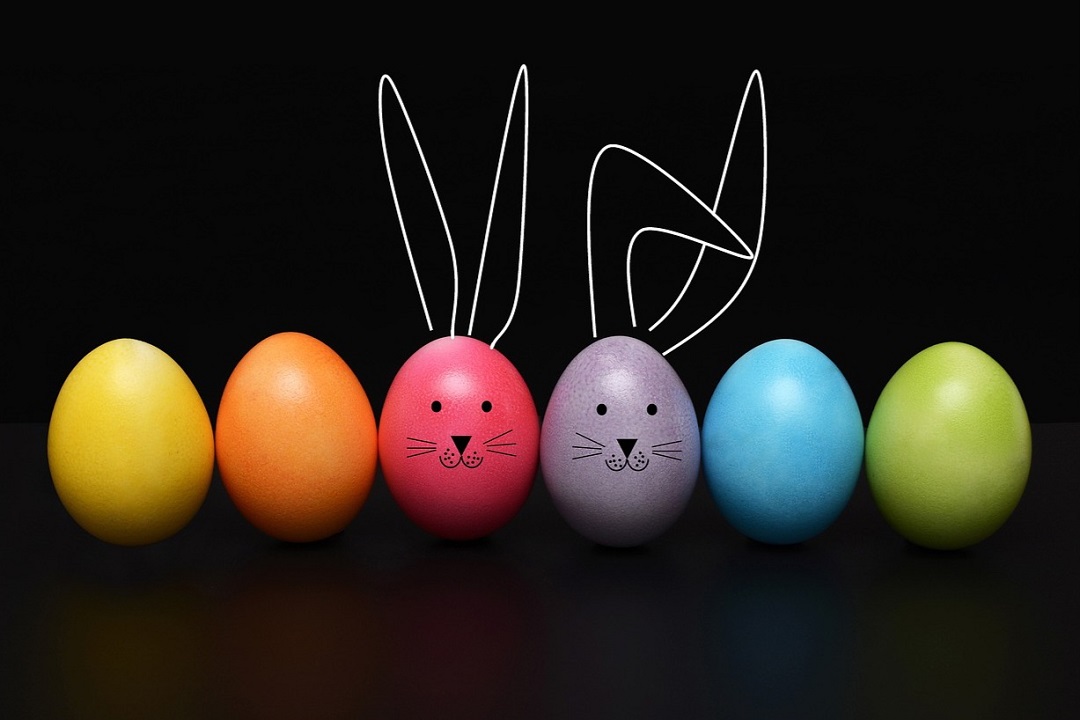

Source:

